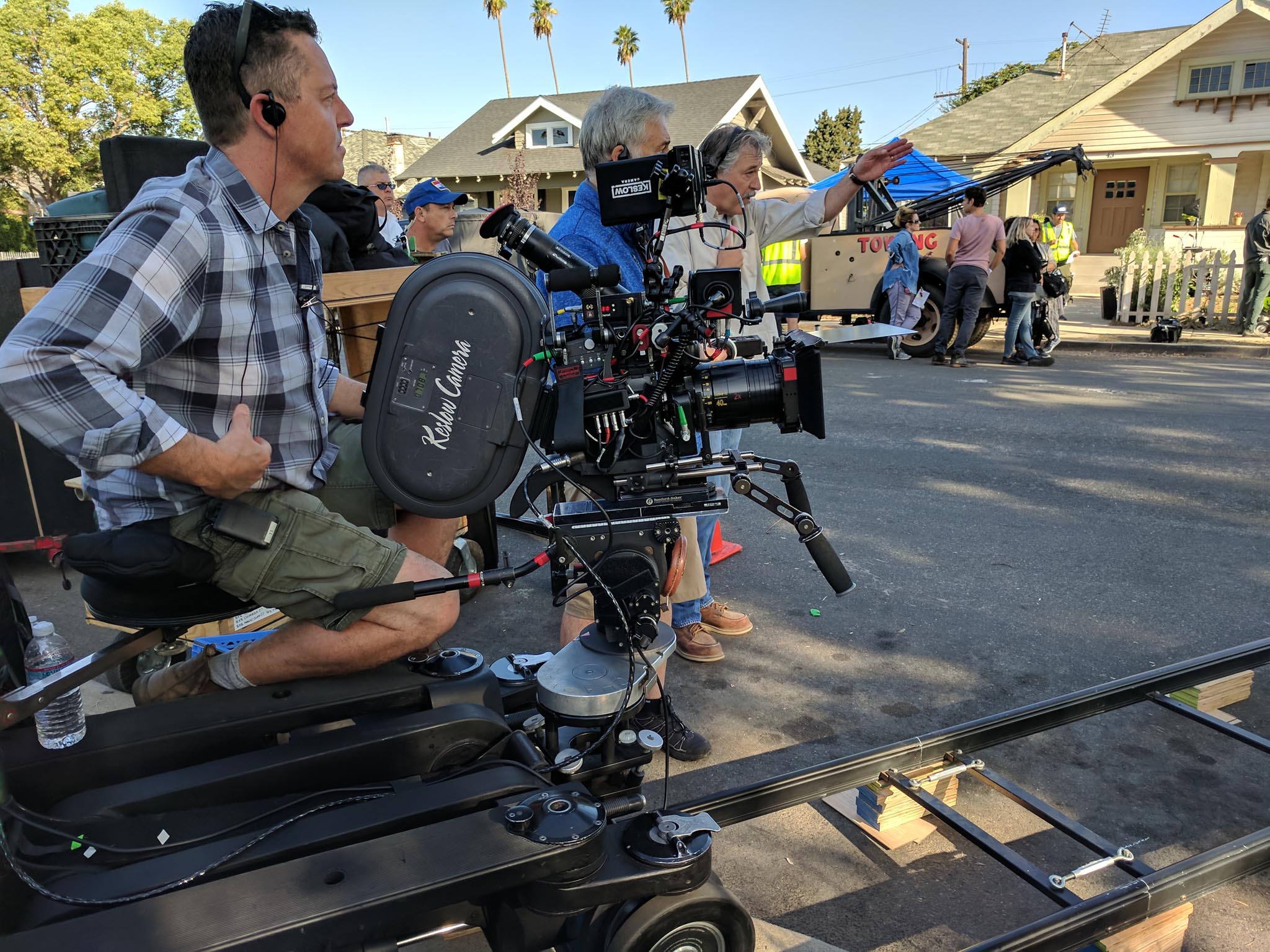
Cinematographer Greig Fraser ASC, ACS on “VICE” with Arricam and Cooke Anamorphic /i 75mm.
“VICE” opened today, Christmas Eve. Round up the reindeer and steer your sleigh to the nearest movie theater. Directed by Adam McKay, “VICE” swings from drama to satire with a hint of the absurd (if it weren’t so true.) It’s the story of Dick Cheney, the Washington insider who maneuvered to become the most powerful person in the US government as Vice-President to George W. Bush. Greig Fraser, ASC, ACS was the cinematographer. Greig called in from an undisclosed location for this discussion.
JON FAUER: Please tell us about the logistics of this film that was shot on film.
GREIG FRASER: Keslow Camera did a great job of supplying our film. In the early stages, I spoke to a number of rental companies about the possibility of shooting anamorphic, spherical, and 16mm. Keslow Camera was fantastic. They had all the cameras, equipment and lenses, and were experts in ALL the formats. In researching the job, I found that no one else had the depth and knowledge they did. I discussed the logistics with them and they really bent over backwards. I was super excited to be working with them.
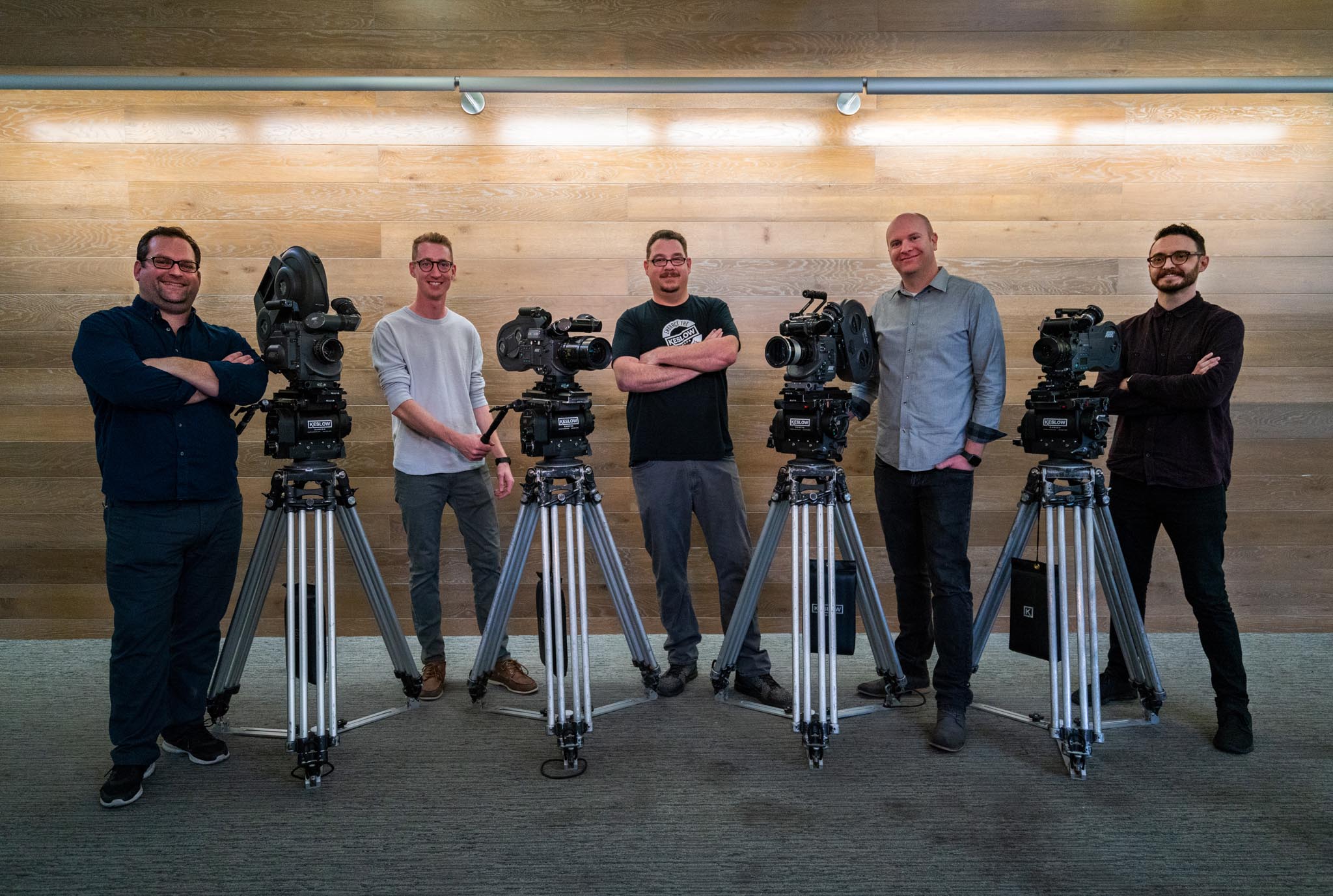
Part of the VICE package in the Keslow Camera prep area. L-R: Ryan Griffith (Senior R&D Technician with Arriflex 435 ), Ethan Cruice (Operations Supervisor with Arriflex 235), Mitch Rutherford (Senior Camera Technician), Brad Wilson (VP, Business Development with Arricam LT), Nick Lanata (Marketing Agent with Arriflex 416).
Anamorphics.
At first, I wasn’t sure which anamorphics I really wanted. I didn’t know the Cooke anamorphics very well, and I thought maybe I’d test them along with some other lenses that I knew very well. But I ended up finding the Cookes had the perfect balance of sharpness and character that I needed. I augmented the Cookes with some beautiful, vintage Todd AO anamorphic primes and Elite spherical primes that Keslow had.
It’s interesting about the Cooke 35mm format Anamorphic /i T2.3 primes. They were designed in the digital era, I guess mainly for digital cameras, and yet they look fantastic on film.
Yes, and I’m a strong supporter of Cooke. I used to own a set of Cooke S4 primes. I shot Zero Dark Thirty with Cooke S4 and Elite. So, I’m a huge fan of the Cooke spherical lenses. These Cooke Anamorphics have a similar quality, with beautiful bokeh. There’s a Cooke smoothness that I can’t really describe. Focus falls off beautifully. Away from the center, they are not fully sharp left, right, top and bottom. I know Cooke prides themselves on being really great technically and they are. They have a special warmth to them that I felt certain other lenses maybe didn’t have for this film.
Brad Wilson at Keslow Camera said you had a bunch of 35mm and 16mm cameras with spherical and anamorphic lenses.
We used Cooke 35mm anamorphics and Elite 35mm spherical primes. We had Arricams, Arriflex 435 and 235 and 35mm Eyemos. For 16mm, we had Bolex. We had great opportunities to shoot in whatever format we wanted, covering the wars in Afghanistan, Iraq, Vietnam, Cambodia, inaugurations of presidents and so on. We really went to town on formats.
Mix and match?
It was rewarding to match stock footage and video from the different eras with footage that we just shot six months ago. When I was grading, I was pleased to see how it cuts back from beautiful anamorphic 35mm to grainy or hazy video footage or grainy film to great footage and then back to the beautiful 35mm. That’s essentially the underlying story.
How did you decide to shoot film in the first place?
Thankfully, we had a supporter of film in director Adam McKay. When we talked about it, he said “What do you think about shooting on film?” I love film, so why wouldn’t I shoot on film?
We shot some tests, in 35mm and 16mm film. We pushed the 16mm, we pushed the 35mm film, and then we tested digital. We tested digital 65mm. Digital large format was fantastic and we loved it. But we felt that this film, which spanned the course of maybe five decades, would be better in film. I wouldn’t use the word nostalgic, because that is not what we were aiming for. It felt like something you were watching from the period that it was being shot in.
Nostalgia is not the right word. It’s more indicative of a memory, of imagining how images from those periods might have looked.
Was it difficult assembling your large package of analog motion picture camera equipment?
Keslow knows very well about my love of funky bits of kit. [laughs] I guess I was lucky that they had just acquired Denny Clairmont’s vast collection of analog equipment. When the sale went through, I got a very excited phone call from Brad Wilson saying, “You’ve got to check this out, it’s like a treasure trove.” Clairmont had such an amazing history of making custom gadgets and bits of great optical equipment and lenses, and to have that at my fingertips, it felt like I had a really full toolbox from which I could draw upon.
Your assistant Bill Coe said that when he walked into Keslow Camera on his first day of prep, it was terrifying: every film camera the world has ever seen was lined up. [laugh]
Yes, it was like they had pulled out every single camera that Keslow had. It was sitting there in the prep area. I felt bad for him, because I wasn’t sure exactly what cameras we would use for what, because I was still brainstorming with Adam.
I was still getting a feel for where we were going to use 16mm for the early days and 35 mm sphericals for the 70’s. I was still trying to get my head around the rules for the film.
Poor Bill had to endure a bit of time of me being a little bit wishy-washy about what they were for. But, I did assure him that whatever happened, we would work within the limitations of our department. We certainly had our work cut out for us in the first few weeks, but we soon came into a very nice rhythm that worked out well.
I guess the toughest job might have been your loader?
Yes, that’s exactly right. There were a lot of different film magazines to load. There weren’t that many different stocks. I think we only had two stocks, Kodak Vision 500T and 200T. But we had three different gauges, and many different cameras. We had an Arriflex 235, Arricam LT, Arriflex 416, Eyemos, and so on.
We had a good idea of what we were using coming up. It wasn’t like all of a sudden we’d switch to the 235. If we were shooting an interior on Vision 500T, then there was a good chance that we would do a handheld shot on the 235. There was always that knowledge of what the scene was requiring. But loading is almost a dark art now. People who know how to do it are really quite special.
I was wondering if they are still making changing bags, or dark rooms.
Actually it’s a very good question. I think we had to build a darkroom or at least get rid of all the spare tires and the stuff they stored in the darkroom on the camera truck.
I guess Keslow still has people who remember how to maintain and repair film cameras and magazines?
Yes, I think they pride themselves on that. We had great kit, great support, and they were doing everything extraordinarily well.
In post-production, was the negative scanned and then DI?
The film was actually scanned in 4K during production for the dailies. The scanning process has gotten so good now that we touched the negative only once and that was all.
When you say the negative is only touched once, that was in the dailies stage?
That’s correct. We went through Fotokem and used their Nextlab Dailies system. That translated directly into the final grades. It was awesome walking into the final grading suite and the colors were identical to the dailies and what everyone had been watching during the Avid edit. Our colorist was Dave Cole who also oversaw the dailies.
Did you refer to old films or stills in preparing for “VICE?”
We looked at some footage from the era. We weren’t trying to mimic it, we weren’t making a documentary. We were doing a drama. We stuck to a line of creating simple, elegant images for the main narrative thread that wasn’t outlandish, that wasn’t crazy. It was relatively austere and simple, because we could then go to the different formats of 16mm and video to create some craziness in between the anamorphic 35mm.
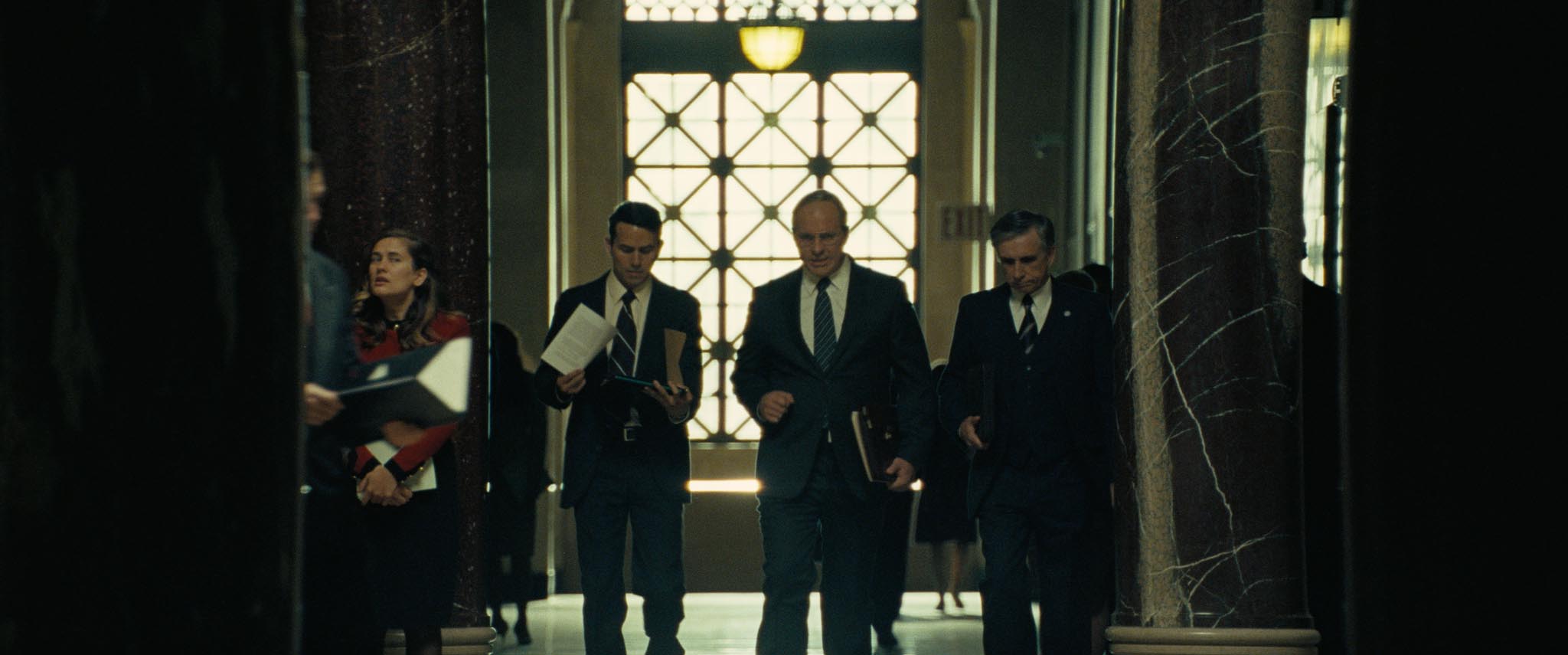
Framegrab from film: Christian Bale (center) as Dick Cheney in “VICE, “an Annapurna Pictures release. © 2018 Annapurna Pictures, LLC.
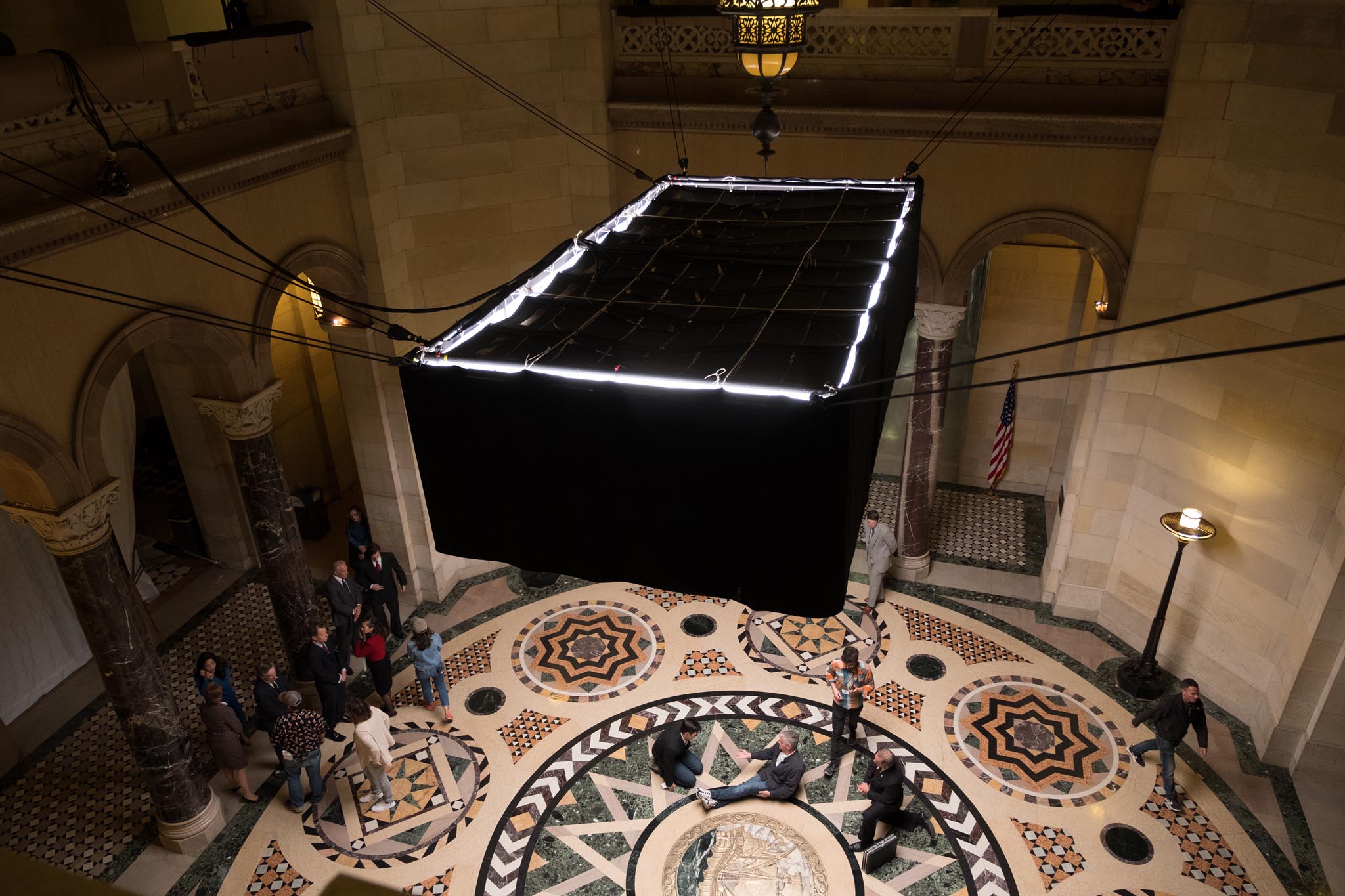
The location where it was shot. City Hall, Los Angeles. 10 bi-color Lite Tiles in a rig suspended from each corner with 4 block and tackle lines. Photo : Matt Kennedy.
What about lighting on the show? Did you use vintage lighting fixtures?
No. I’m a very strong advocate of solid-state (LED) lighting. I know it’s not for every DP, and I know I often chew people’s ears off with my strong opinions about these things. As you know, I drive an electric car in Los Angeles because I try to do my part for the environment and all that.
If I then go off and light our set with fifty 6K space lights, then I just wiped out six months of good zero-emission driving in my electric car. In one hour of using 50 x 6K fixtures, that’s 300,000 watts (300 kilowatts). But that’s not the only reason. I’m also very much into the flexibility and the ability to change colors with LED fixtures, because that means I can treat the set the same way that I would do a color grading session in post production.
I can adjust the green and blue, really refine the look and get very particular with the color. To me, it is a tool that I think is unbeatable: the ability to create very interesting, beautiful, subtle colors. When you shoot digitally, you can refine while viewing a monitor on set. When you shoot with film, though, it’s a little bit harder because you rely on your color meter and your testing.
Gaffer Mike Bauman comments: It was the Sekonic C700. I just tried the new C800. That is a game-changer in my humble opinion.
Greig, what kind of light fixtures did you use?
On the recent movies, I’ve used Digital Sputniks and LiteGear units. “VICE” was no different. The Digital Sputniks were used to create a soft sun. If you put enough Digital Sputniks together side by side, you end up with a light that looks a lot like a soft sun, but with the ability and flexibility to adjust the color. For example, you can make it warmer or a little bit more magenta for a late afternoon warm glow. We used a lot of the LiteGear panels in the studio to create the ambiance outside the White House and the West Wing. We also used the Creamsource Doppio bicolor LED lights and they’re incredibly useful as well.
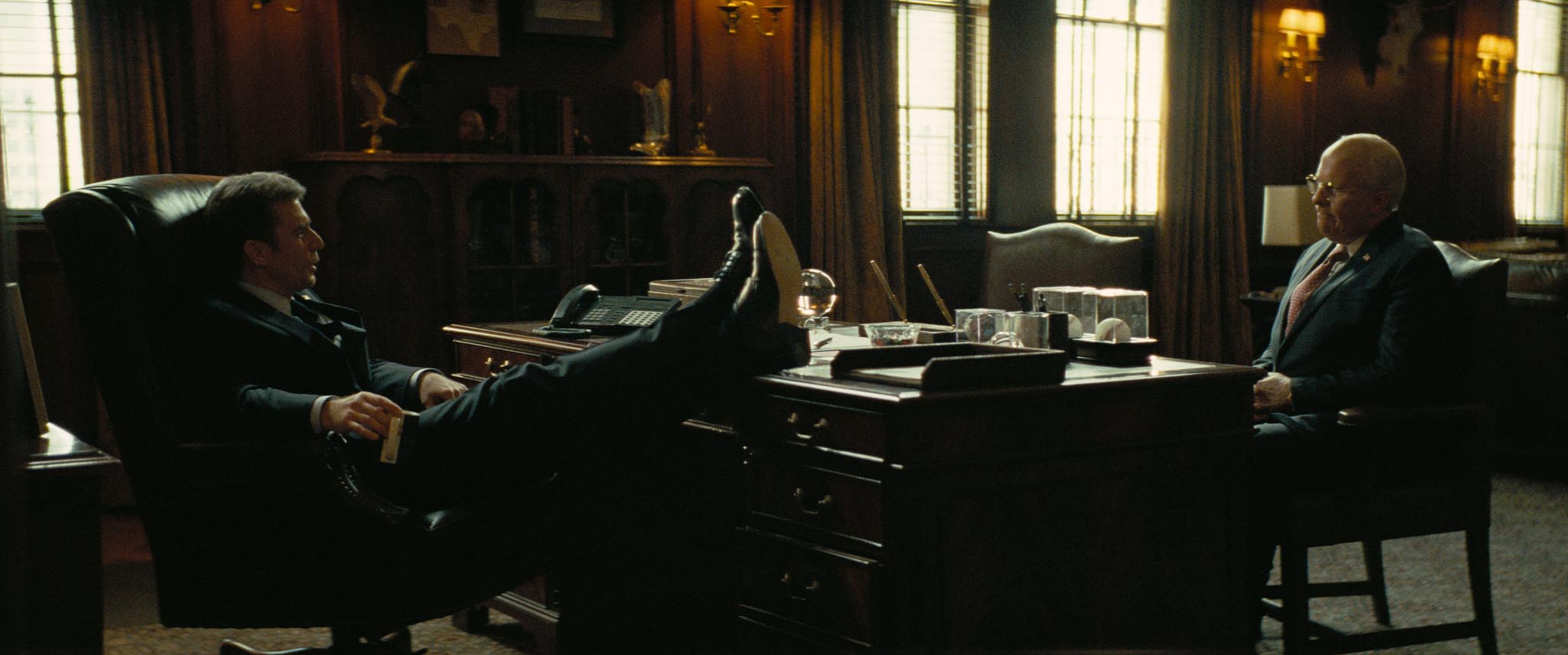
Framegrab. Sam Rockwell (left) as George W. Bush and Christian Bale (right) as Dick Cheney. © Annapurna Pictures, LLC.
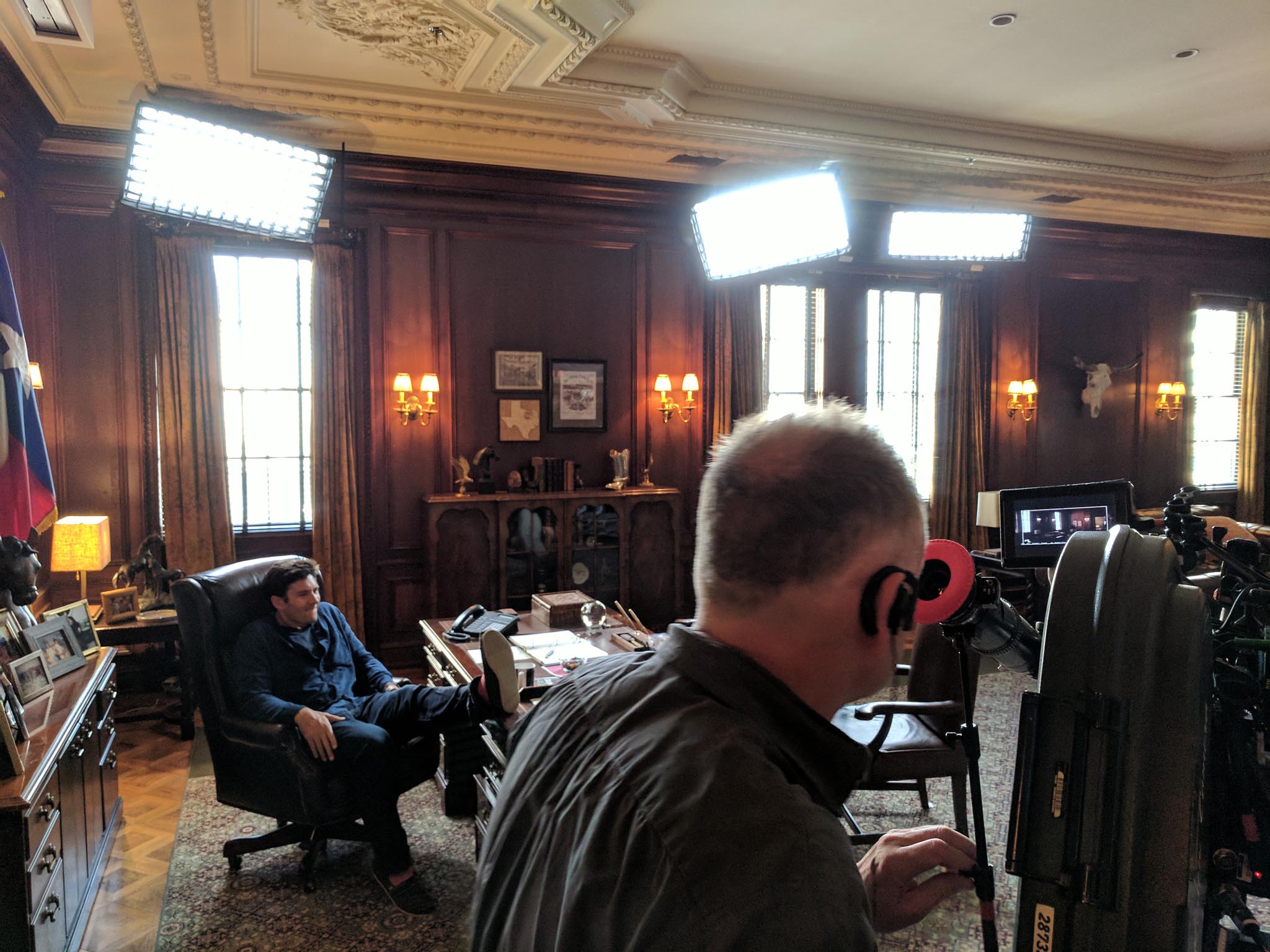
On location in the Biltmore Hotel, LA. Greig explains, “We needed to carefully plan the sun path, and we then augmented with LiteGear LiteMats when the windows were not getting hit with sunlight.”
LiteMat Plus LED fixtures were mounted above the windows. They can plug directly into wall outlets.
You were one of the first cinematographers to embrace LEDs.
If I can power a light source with a battery, then suddenly it removes a lot of the infrastructure that you need to run a light. Suddenly, you need less power, maybe no generator, you need fewer cables, expendables and consumables. It’s about flexibility. If I want to make a light slightly cooler, slightly warmer, without having to send a group of five people with gels and ladders and frames and making lots of noise, in this case I can do it quietly without disrupting the actors. The lighting department and I suddenly come out looking good because we’re being quick and efficient, and no one notices our behind-the-scenes workings.
This current world of lighting is so exciting because the quality that comes out of these LEDs now is so good. I’m talking about the appearance of color and how good they are with skin tones, particularly the fixtures that I have just mentioned.
I’m not one of those guys who want to throw tungsten lights away. I think options for DPs are great. At some point in the future, I may want to use those lights again. But right now I’m really into simple rigging, flexibility, and color changeability of LED lighting.
How did you get started in the film business?
I was at a photography school in Melbourne called RMIT. I became a photographer, working professionally. But I had some friends at a film production company and I thought that was actually more of what I wanted to do because film production is a team effort and that really appealed to me.
As a photographer, you often work by yourself. You might live in a vacuum but as a filmmaker, you collaborate. You brainstorm with the director and crew, talk about references, and develop an idea. It is a very invigorating experience because you draw upon your own experiences and hopefully support each other’s ideas and grow them.
Additional photos and interviews with Mike Bauman, Gaffer and Bill Coe, First AC will follow in the next edition (February 2019) of FDTimes.
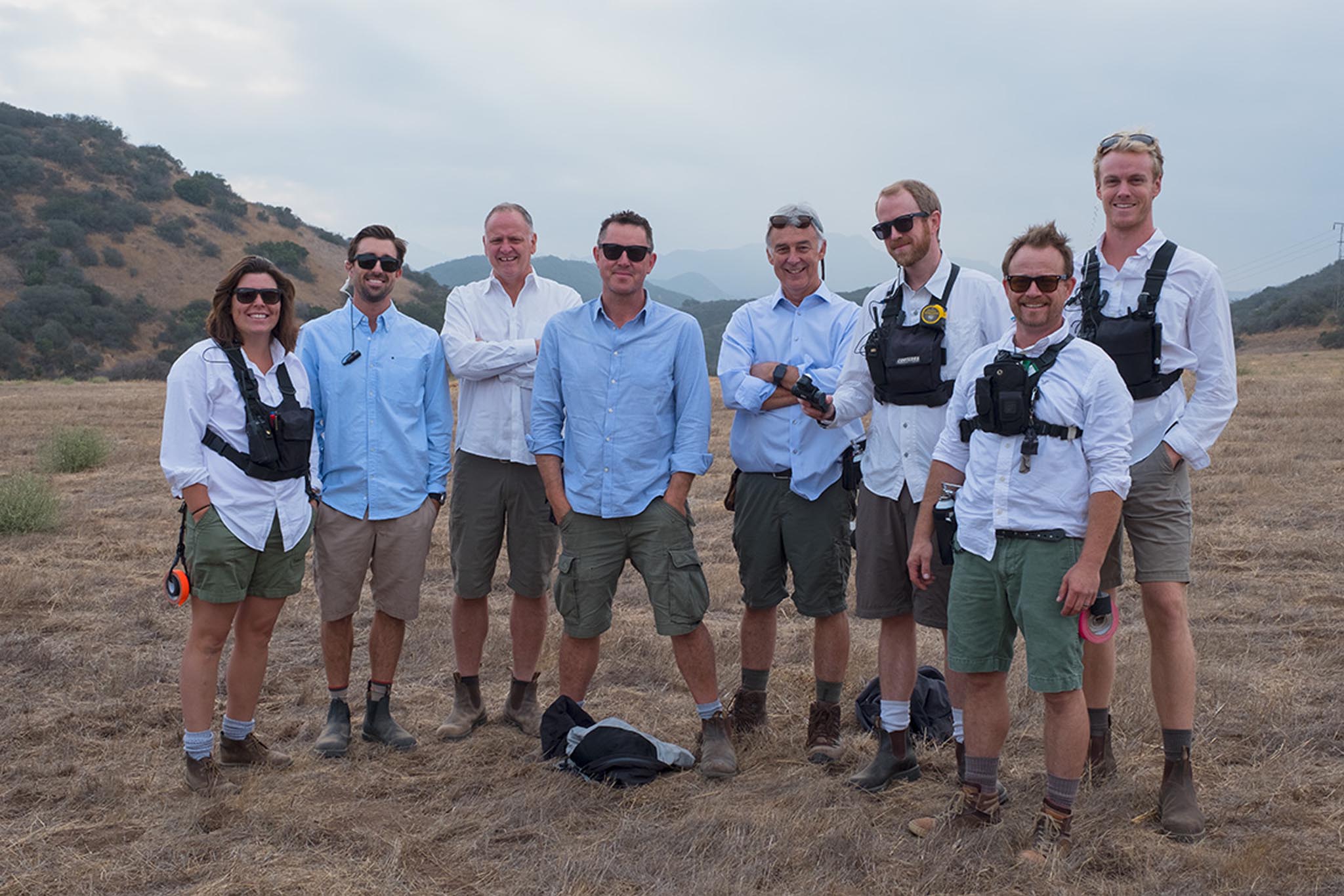
Bill Coe, First Camera Assistant on VICE said, “Greig often wears the same style of clothing every day: cargo shorts, Blundstone boots and a blue or white shirt. So, for Halloween, we all dressed up like Greig.” Left-to-right: Amanda Levy, “B” Camera 2nd Assistant; Paul Metcalf, “B” Camera 1st Assistant; Baz Idoine, “A” Camera Operator; Greig Fraser, ASC, ACS, Cinematographer; Bill Coe, “A” Camera 1st Assistant; Ryan Creasy, “A” Camera 2nd Assistant; Christian Kessler, Additional 2nd Assistant; Rob Reaves, Camera PA.


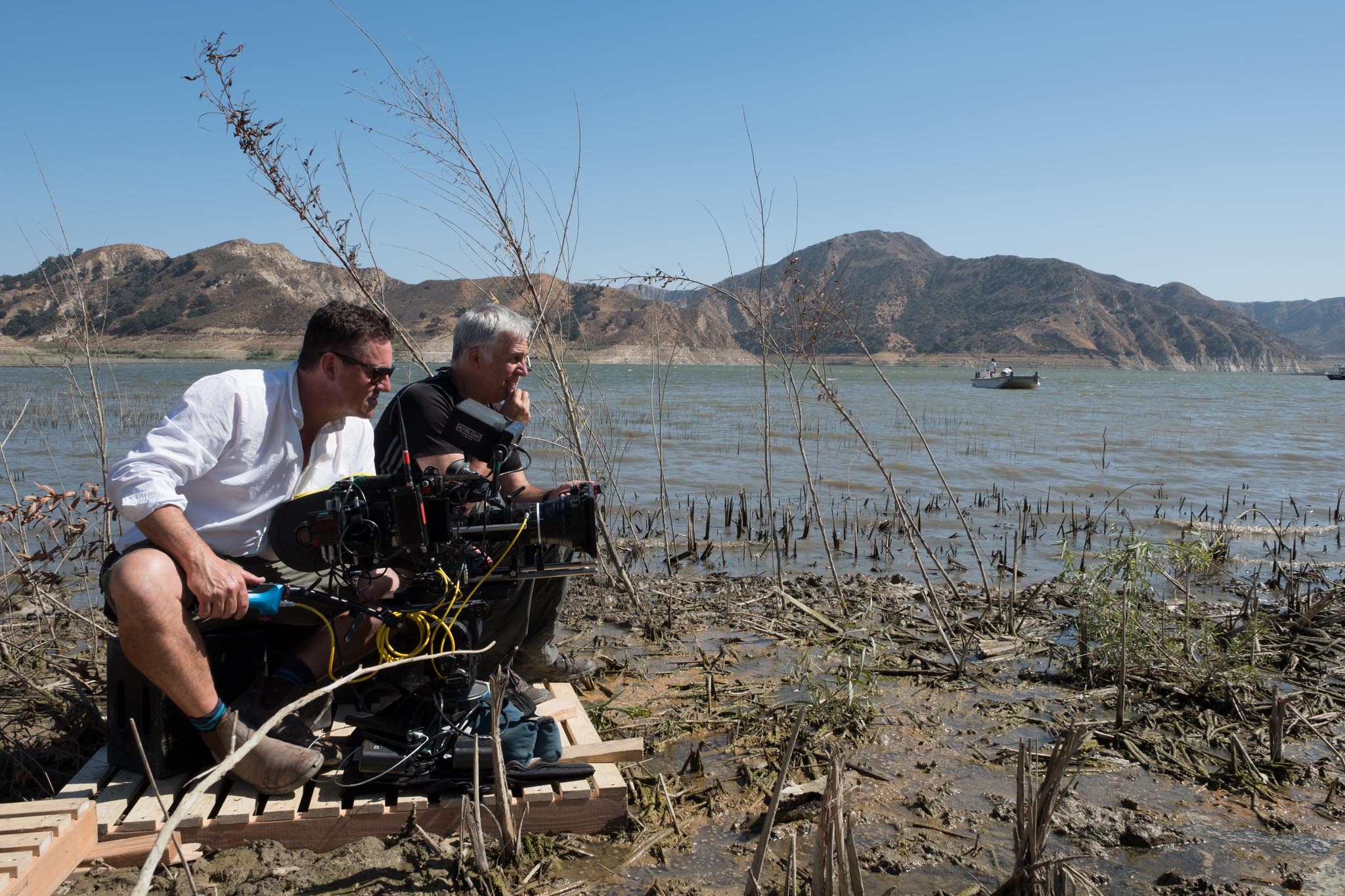
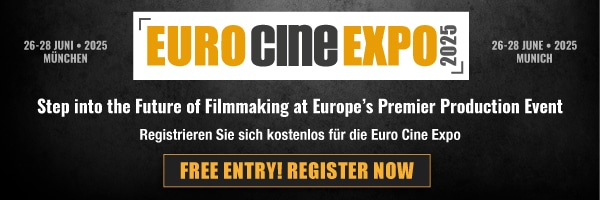







so proud of Greig
Such an incredible film and just love reading about how it was made from a cinematographer’s perspective!